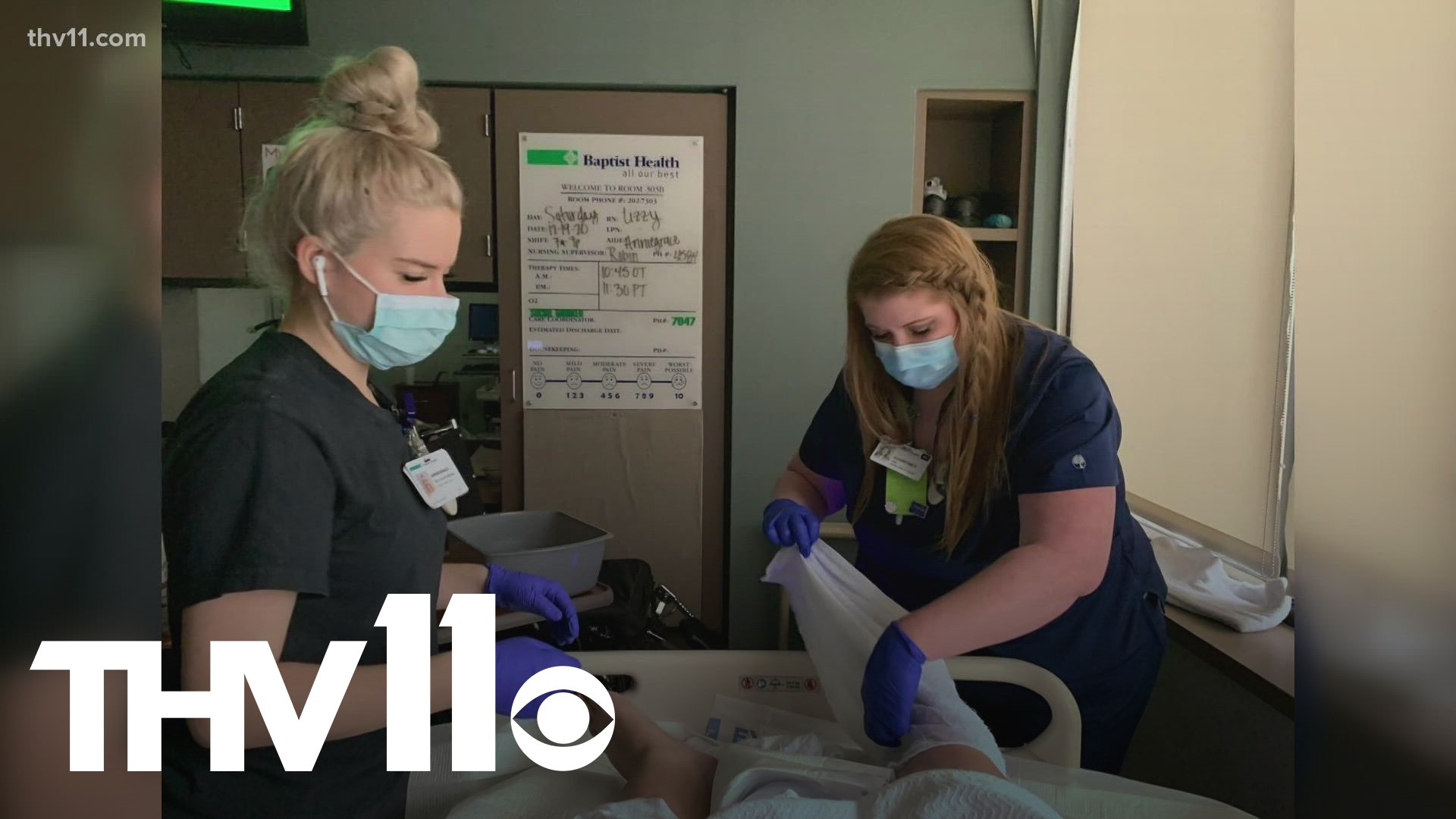LITTLE ROCK, Ark — Severe cases of COVID-19 can lead to serious symptoms that land some patients in the ICU. These progressive stages can come in five stages, according to one UAMS doctor.
"People are short of breath at home and they can't breath is when they come to the hospital in some way," said Dr. Nikhil Meena, the ICU director at UAMS. "How much oxygen they need at that point decides whether they come to a regular floor or coming to the ICU."
Meena has directly worked with around 1,000 COVID patients in the last year. He puts the progression stages into five different categories.
The first stage is patients showing up to the hospital complaining of having trouble breathing.
Anybody doing more than 30 breaths per minute needs to be admitted into the ICU because they can potentially deteriorate from there.
Once the second stage hits, the patients oxygen levels are usually low and they are admitted to the ICU.
Patients are given high frequency oxygen, which is a form of mechanical ventilation. It's a small tube inserted into the nose to better help the patient breathe with support.
In the third stage, if a patient doesn't progress from there they're given an oxygen mask.
A non-invasive ventilation such as oxygen masks keeps pressure on the lungs to keep them from completely collapsing at the end of a breath.
Patients who make it to the fourth stage of the infection will be placed on a ventilator.
A plastic tube is put through a patient's vocal cords and they're put on a machine that controls their amount of breathing.
This helps the lungs to rest in order to repair itself without causing injury from the act of breathing.
And then the final stage, after all else hasn't helped the COVID-19 patient beat the virus they are put on an ECMO machine.
It's a machine that acts like a bypass around the lungs. Dr. Meena said only half of the patients put on this machine get off.
"The whole reason we put them on bypass is because we assume that if we had not put these patients on the ECMO all of these patients would have died. Not just half of them," Meena said.
RELATED: Here's the life support machine that's a 'last-ditch effort' for those hospitalized with COVID
Sherry Marban made it through four of the stages with her COVID diagnosis. She was given a 3% chance to live and was in an induced coma for two months before waking up on a ventilator.
She started coughing more than usual at home.
It was around five the morning a few days later when she thought she should go to the hospital. She couldn't breath.
"It was just a real struggle to catch a breath. Kind of like you're underwater swimming, and you're trying to come up for a breath and you're trying to catch a deeper breath," she said.
She thought she would be out of the hospital by noon that day.
By the time she got to the hospital a nurse and security guard had to help her in where she doesn't remember what happened after that.
"The doctors did say if I had not gone to the hospital and taken that breathing challenge serious I would not have made it by noon," Marban told us.
She doesn't remember much about the different stages she went through because for most of it she was in an induced coma.
She remembers dreaming all sorts of strange scenarios throughout the experience. In one dream, her husband was trying to break into the hospital to see her when he was told he couldn't.
When she woke up, the effects of being a severe COVID-19 patient are still with her to this day.
"For me it's still a struggle to walk long distances. The breathing gets really tough. Especially wearing the masks. Raising my arms up," she said. "Things like that are very difficult still and I've been home for 8 months."

